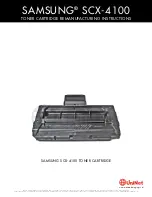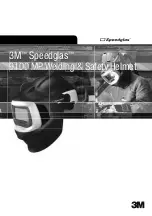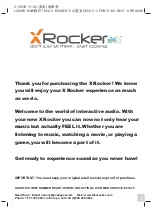
QTS-6000 Series
Analog Transmitter/Sensor
B71050-021-000-RB.doc
ELECTROCHEMICAL TRANSMITTER
JUL. 18, 2007
PRODUCT MANUAL
11
7. START-UP AND COMMISSIONING
The QTS-6100 Series Sensor/Transmitter comes from the factory completely configured, tested and
calibrated as ordered. Verify the model number is correct and follow the installation instructions in this
manual. Check all wiring prior to applying power to the transmitter. Using a digital multimeter
(DVOM), check power at the terminals to ensure a nominal 24 VDC is present. Connect the DVOM to the
test jacks on the upper CCA with a range selected that will display 20 mA DC. The reading on the test
jacks is the actual output from the transmitter.
It is not uncommon for the electrochemical sensor to register a response when first started up, even in clean
air. If the sensor was not covered, some gases may have entered the cell and not been cleared by the
unpowered unit. Generally the sensor will be fully warmed up and clear of any gases within one hour of
power being applied. Under extreme conditions this period may be as long as 24 hours. The exception to
this is the ammonia (NH
3
) sensor. This sensor will take between three and five days to be fully warmed up
and provide a stable output. Calibration of any transmitter should not be performed until the sensor is fully
warmed up and stable.
8. ROUTINE MAINTENANCE
8.1 Calibration
Recommended calibration of the QTS-6100 Series Sensor/Transmitter is every 90 days, or as necessary.
The user should take into account actual installation environment and the possibilities for failure due to water
or corrosive atmospheres. The seriousness of a failure to alarm or the lack of precision in that location
should also be considered and calibration periods adjusted accordingly.
8.1.1 E
QUIPMENT
R
EQUIRED
•
Digital Multimeter;
Accurate to 0.1 mA maximum.
•
Screwdriver;
Small, for adjusting trim potentiometers.
•
Zero Calibration Gas;
20.9% Oxygen, balance Nitrogen, or some other source of clean air.
•
Span Calibration Gas;
Should be as close to the span concentration as possible and no less than 50% of
the span concentration.
•
Flow Regulator;
For calibration gases; should regulate the gas flow in the range 200 to
1000 ml/min.
•
Calibration Adapter;
As supplied by QEL
•
Tubing;
To connect from the regulator to the calibration adapter
*CAUTION*
Some target gases, such as Chlorine (Cl
2
) and Hydrogen Sulphide (H
2
S) may be
absorbed by standard plastic tubing. This absorption will alter the concentration
of the calibration gas actually reaching the sensor element and therefore cause
erroneous calibration. Teflon tubing should be used for CL
2
and H
2
S gas
calibrations.








































